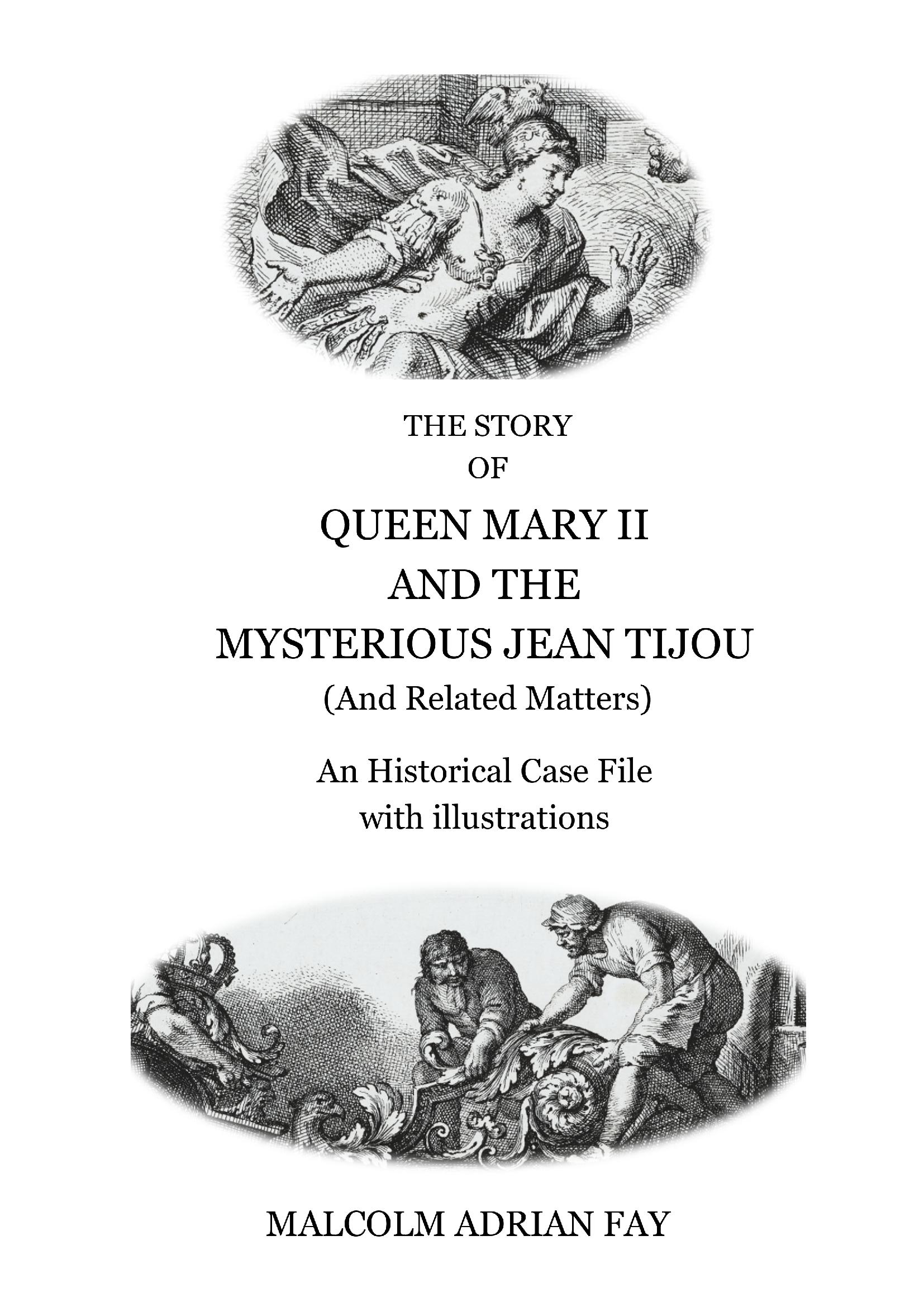Description
The Story of Queen Mary II and the Mysterious Jean Tijou
by
Malcolm Adrian Fay
This unusual and intriguing book, researched and written by Malcolm Adrian Fay, is a detailed historical case file, the main object of which was to investigate and unravel the perplexing story appertaining to a fascinating and extraordinary 17th century mystery, which has baffled historians ever since. An historical case file is a type of literature in which fact and opinion are woven logically together to suggest an answer.
Using recently unearthed evidence and combining it with historical facts and circumstantial evidence, the author applied logic and common sense to piece together the extraordinary life of the mysterious and illusive French artist-blacksmith Jean Tijou, who the author alleges, had a very close relationship with Queen Mary II. Jean Tijou created for Queen Mary II the famous and magnificent Fountain Garden Screen at Hampton Court, and for Sir Christopher Wren he created the beautiful decorative ironwork which graces the interior of St. Paul’s Cathedral in London.
Furthermore, the author makes some startling new hypotheses. That the name Jean Tijou was an alias used by the English artist-blacksmith known as Huntington Shaw, and that he was the illegitimate son of King Charles II and Jane Lane (Lady Fisher) on whom the King showered spectacular gifts, in particular the coat of arms of England, a unique award, usually only displayed by members of the Royal family. Further, that the King requested his illegitimate son Huntington Shaw (alias Jean Tijou), who possessed all the favourable qualities of a Stuart, depart Paris for the Dutch Republic on a very important strategic mission, designed to influence a disconsolate Princess Mary (later to become Queen Mary II), who was unhappily married to William III, Prince of Orange, Stadtholder of the Dutch Republic. And, that unbeknown to Princess Mary’s husband William III, Prince of Orange, Princess Mary and her cousin Huntington Shaw (alias Jean Tijou) had issue, and that they named their secret love child Louis Fordrin, who in actual fact became a famous artist-blacksmith in France. And the author also propounds, that the poor beloved Queen Mary II, who was in a joint monarchy with her power-hungry husband King William III, was ruthlessly murdered by him. Thence the King hounded Huntington Shaw out of England. On the very elaborate façade of the Victoria and Albert Museum in London there is a magnificent effigy to commemorate the Prince of Blacksmiths, Huntington Shaw (alias Jean Tijou). But sadly, his huge marble tomb memorial, which once prominently stood against the wall of the original St. Mary’s Church in Hampton, is no longer to be seen, though the author has discovered two water colour paintings of it and a drawing, all of which are highly illuminating to this historical case file. The author also alleges that the Fountain Garden Screen at Hampton Court was not made in England, rather it was made in Holland (or the Dutch Republic as it was then known) and soon after shipped to England.
The reader will come across an in-depth detailed analysis of a famous oil painting of Queen Mary II and also the exquisite frontispiece to Jean Tijou's Book of Drawings published in 1693, both of which are enormously relevant to this historical case file.
This fascinating 577-page historical case file with 270 supporting illustrations, also covers many other related topics. Like, for example, a description of how Huntington Shaw (alias Jean Tijou) made the Great Chain which holds the dome of St. Paul’s Cathedral secure. The author also describes how Huntington Shaw’s unique iron masks were made. They once graced the Fountain Garden Screen at Hampton Court, but sadly only a few original masks remain and these are displayed in the Iron Gallery in the Victoria and Albert Museum, London. Also, the author elaborates upon the argument concerning the dismantling of decorative iron railings and gates for the Scrap Iron Campaign of WW2. Fortunately, the ironwork for the Fountain Garden Screen at Hampton Court survived and the author describes the woeful history of this priceless unique and irreplaceable work of art and craft.
Author: Malcolm Adrian Fay
Hardback
ISBN: 9781399998161
Published Date: March 2025
Page Count: 577
Illustrations: 270
Dimensions: H. 29.7cm x W. 21.5cm (approx. A4) x D. 4.0cm
Weight: Approximately 2250g
"Details
Publisher -
Language -
Hardback
Contributors
Author
Malcolm Fay
Published Date -
ISBN - 9781399998161
Dimensions - 29.7 x 21.0 x 3.3 cm
Page Count - 578
Payment & Security
Your payment information is processed securely. We do not store credit card details nor have access to your credit card information.

